This article will detail how to create an integration between Solver and your Finance data using the Solver QuickStart Process. It is required to install the Solver Extension first. For information on installing the Solver Extension, please review this article.
Once the extension is installed.
- From within Solver, navigate to the Data Warehouse > Data > Integration
- Click Add New at the top right corner of the Integrations menu.
- Select the Dynamics 356 Finance & Operations connector from the marketplace.

- Click on Create QuickStart button to begin the QuickStart Process
- You will first be prompted for your D365 Finance URL. This should be in the format https://<yourURL>.com

- Click Authenticate. A login popup should appear. If this popup does not appear, check to make sure that you have not blocked popups in your browser settings.
- In the popup that appears, type in the selected account to connect Solver to your Finance installation and the company within your Finance installation. The user that you are using should have these permissions configured within Finance.
MFA (multi-factor authentication) is supported. The MFA process is only required when the user logs in the first time. Subsequent authentication processes, such as when an integration is ran the next day, do not need to be unauthenticated with Solver.
MFA, and authentication, must be reset in Solver if you reset the users password in Microsoft EntraId.
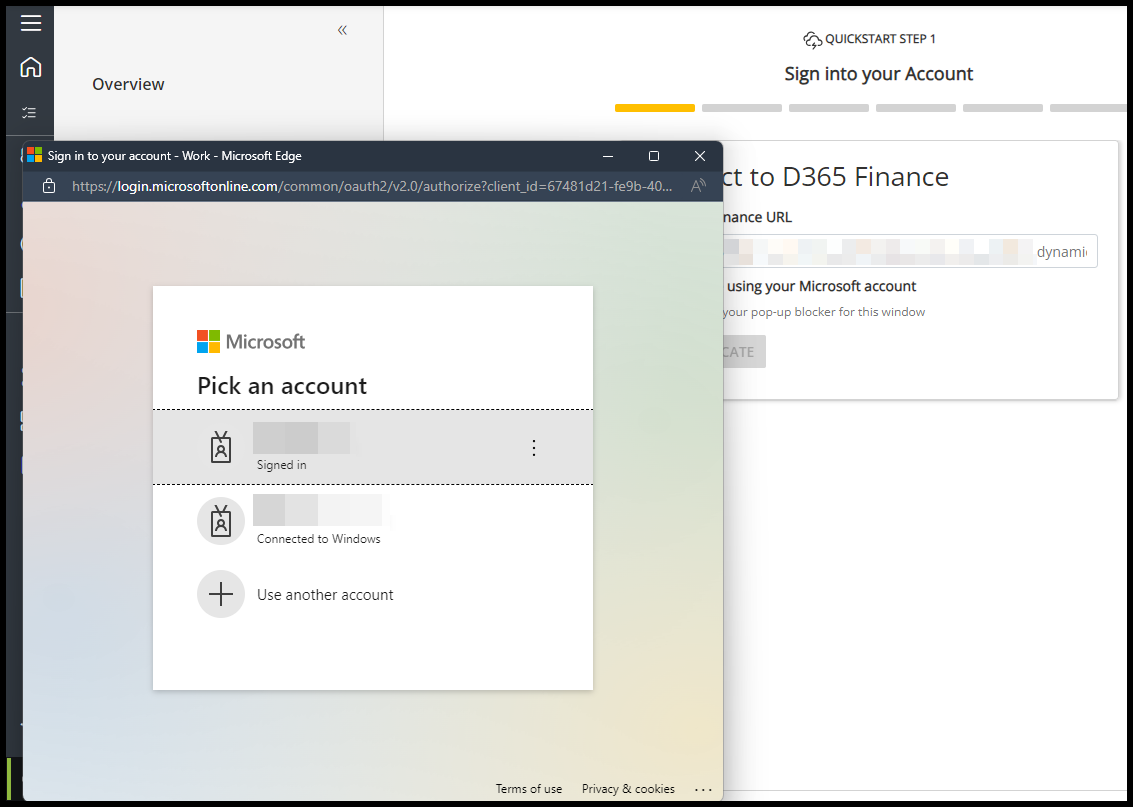
The Solver QuickStart process will load the last year to the current period of data for the selected company. This is done to achieve a quick data load process. You can change the filters after the QuickStart wizard is complete, described below, to load in multiple companies at once. - If the user credentials provided are valid, you will be successfully authenticated and can move to the next screen within QuickStart.
- The next screen prompts for the data that you’ll want to bring into Solver. Select General Ledger and its respective dimensions and click Continue.
- The account dimension is filtered to load Account codes that belong to the “Shared” Chart of Accounts. If you have a CoA that is unique to each company, you will need to remove this task filter. Additionally, if the same code can exist across companies, you will need to concatenate the entity to the Account code or some other process to define uniqueness between the two operational codes.
Please contact Solver Support for more assistance with this process. - Solver utilizes D365 Finance’s “cross-company” = true function. This allows a single endpoint in Fiannce to retrieve all data across all companies that the logged in user has access to.
For all data loads, except Account, all dimension codes will load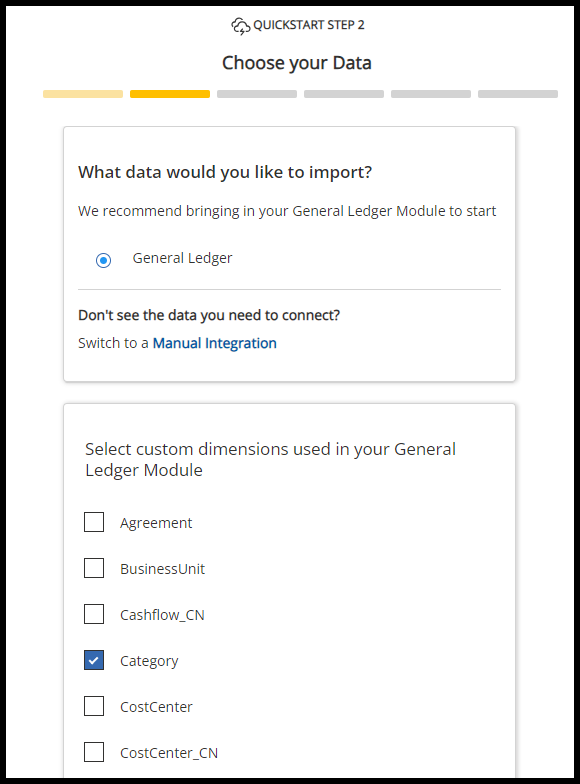
- The account dimension is filtered to load Account codes that belong to the “Shared” Chart of Accounts. If you have a CoA that is unique to each company, you will need to remove this task filter. Additionally, if the same code can exist across companies, you will need to concatenate the entity to the Account code or some other process to define uniqueness between the two operational codes.
- The next screen is the dimension mapper. Use this screen to create and/or map your selected finance dimensions to dimensions within Solver. You can map to existing dimensions, Solver “standard” dimensions, or create your own dimensions by just typing in a name.
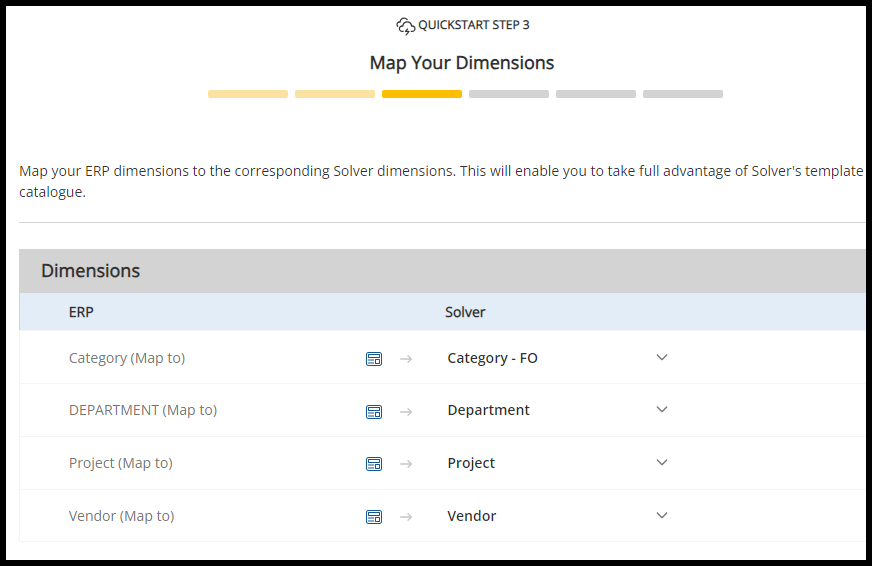
- The next screen is the Account Category mapper. Please map your account categories to the folders within Solver and click Continue.
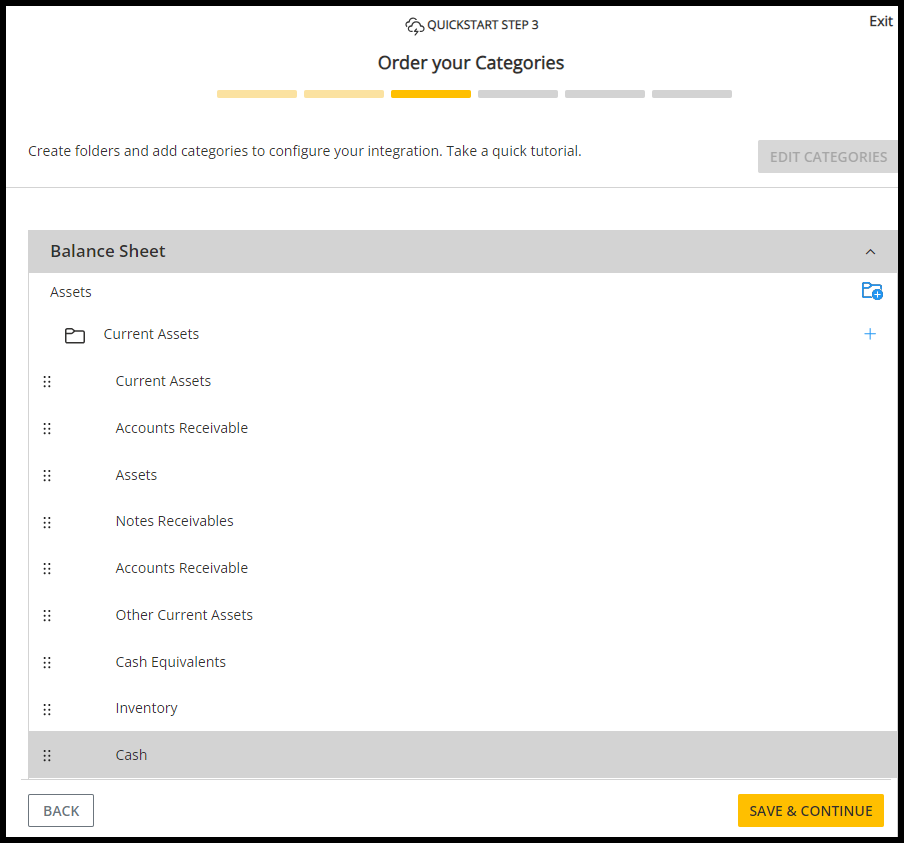
- Upload budget data from D365 Finance using one of the several options of the version of budget data.
- The next screen allows you to configure the Job including setting the recurrence of the job and who should get notifications of success and failed data loads.

- The final screen, confirms your configuration and by clicking Run Now, your configuration is saved and QuickStart will execute.
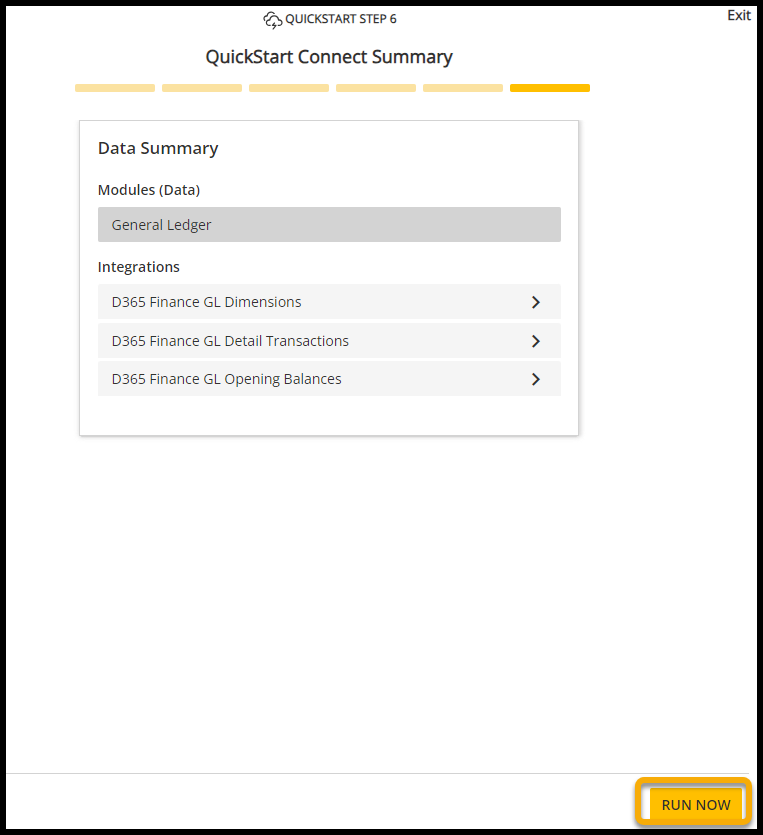
Modifying QuickStart for Finance and Operations.
As mentioned above, QuickStart for Finance is initially configured to load the selected company data into Solver. It is simple to update this to load in multiple companies. To make this modification.
- Find the GL Detail Transactions data load via Data > Integrations and click Edit.
- Modify step 2, “General Ledger Transactions”.
- Click on Task Filter and remove the dataAreaId filter. By doing this, this integration will now load all data upon the next data load.
- Click Save.
- If you’d like Entity to be a parameter in the job step, this is recommended, allowing users to restrict data loads to select entities, on the Create Parameters menu, drag entity as a parameter and click Continue
- Click Publish to save your changes.
Limitations and Need To Know
The following are known limitations/restrictions when connecting Solver to your Finance system.
- The Solver Extension is required and must be installed prior to using Solver within your Finance install. In many scenarios, you will be required to install the extension in the Dev > Sandbox > UAT > Production environments, in this order. Each installation does take some time, please coordinate with your Finance application administrator.
- Solver’s QuickStart utilizes your OData service. Performance is based off the number of transactions that you have in your Finance system and the infrastructure you have allocated to the OData service on the finance side.
For customers integrating more than 5 companies into Solver, it is recommended to reach out to your Partner or Solver consulting services (pmo@solverglobal.com) to discuss best practices on implementing Solver.